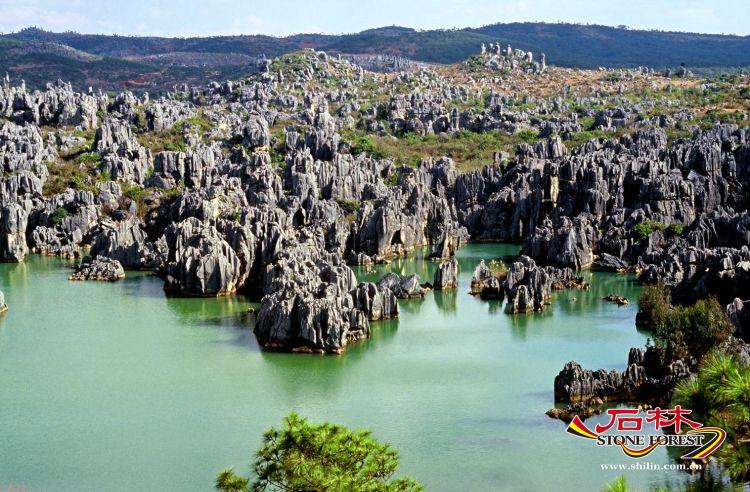- Children from Shijin Kindergarten Made a Study Trip to Shilin UGGp
- Have a spring date with Shilin flowers
- Call for hosts of the 12th International Conference on UNESCO Global Geoparks in 2027
- Call for applications: UNESCO Global Geopark Mentorship Exchange
- Representatives of Changshan Aspring UGGp Visited Shilin UGGp
- Shilin UGGp Visited Xingyi Aspiring UGGp
- Children from Peiqi Kindergarten Visited Shilin UNESCO Global Geopark
Qingshuitang-Shixiangzi Stone Forests Area
Located in the central part of the Shilin Global Geopark, Qingshuitang-Shixiangzi Stone Forests constitute the majority of the special conservation zone and feature pristine stone forest landform.

The Qingshuitang Stone Forests Area (photo by Yang Xinmin)
This area shows clearly the distribution pattern of the stone forest karst. On the rolling and extensive plateau surface, stone forest clusters scatter on various topography: some stand on hilltop and ridge top, some on hillside, some on valley bottom, and some even in the lake water. Stone forest clusters in different tiers demonstrate their age relation or "generation". Those on the highest position are the oldest and those on the low-lying place such as lakes are the youngest.

Stone Forests and stone teeth in the Qingshuitang (photo by Zhao Guohong)
This is also a good place displaying comprehensive stone forest geomorphologic features, besides stone forest, there associated stone teeth field, karst hills, depressions, dolines, and karst lakes.
Many important geological evidences are preserved and displayed in this area. Near the Qingshuitang Lake, basalt remnant of the late Permian age can be observed overlying the earliest karst relief. Not far away is the basal conglomerate and silt of Eocene lacustrine deposits overlying the karst relief of the late Mesozoic to Paleocene. Covered twice, first by basalt lava in the late Permian epoch and then by lacustrine sediment in the Eocene, are two important geological events in the evolution of stone forest karst, which played a critical role in the development and preservation of stone forest landforms of different generations. This is also a unique geological feature compared with other karst landforms in the world.
There is some indigenous vegetation in association with the stone forest landforms, demonstrating typical plateau karst ecosystem.
